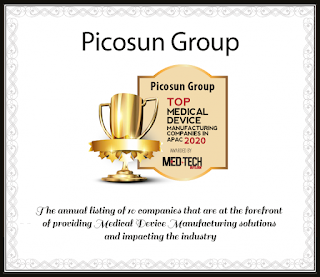Friday, February 12, 2021
SIA Webinar: A Review of the 2020 Semiconductor Market and a Look to 2021
Safer medical devices with Picosun’s antimicrobial ALD coatings
“The aseptic properties of our ALD films are so excellent that they surpass even the strictest requirements of the medical implant industry."
Thursday, February 11, 2021
Imec Demonstrates 20nm Pitch Line/Space Resist Imaging with High-NA EUV Interference Lithography
Source: LINK
----------------------------
By Abhishekkumar Thakur
Tuesday, February 9, 2021
Capacitorless DRAM using oxide semiconductors could be built in 3D layers above a processor’s silicon
Saturday, February 6, 2021
Quantumcat, the ALD-coated sticker that fights against surface contamination and COVID19
A self-disinfecting virucidal sticker
Protection at the service of touch screens
Wednesday, February 3, 2021
Call for Abstracts - The 5th AVS Area Selective Deposition Workshop (ASD 2021)
LIVE Stream - Advanced Process Technologies to Enable Future Devices and Scaling (invited), Rob Clark Tokyo Electron
Sunday, January 31, 2021
AVS Webinar: Plasma-Assisted Atomic Layer Deposition: From Basics to Applications
- Provide the basic concepts of plasma-based processing and thin-film preparation by (plasma-assisted) ALD
- Gain knowledge on the role of reactive and energetic species such as radicals, ions, and photons on the process and resulting film properties, including film conformality on 3D surface topologies
- Present an overview of plasma ALD reactors and discuss important design and processes parameters
- Discuss several plasma-assisted ALD processes for key material systems
- Give insight into existing and potential future applications of plasma-assisted ALD
- Understand the pros and cons of plasma-assisted ALD with respect to thermal ALD
Friday, January 29, 2021
Live Web-Event „SIMULATION FOR ALD″ on March 25, 2021
- Live Web-Event „SIMULATION FOR ALD″ on March 25, 2021
- Live Presentations, Simulation Talk, After Work Discussion, Online Market Place
Thursday, January 28, 2021
Micron Delivers Industry’s First 1α DRAM Technology
Wednesday, January 27, 2021
Call for Abstracts ALD & ALE 2021 Tampa,FL, USA
|
Thursday, January 21, 2021
Master Thesis in Nanotechnology with Alixlabs in Sweden on Atomic Level Fragmentation
Tuesday, January 19, 2021
Webinar - Enhancing Yield by Minimizing Contamination with Beneq ALD coating solutions
- Common issues of metal or particle contamination on critical chamber components
- Common coating methods against corrosion, and how they compare
- What properties to look for e.g. purity, uniformity, when evaluating the optimal protective coating solution
- Unique benefits of ALD coatings with Al2O3 and Y2O3
- Working with your OEM partner to design, test and implement an ALD coating solution for your equipment



%20(1).png)

























